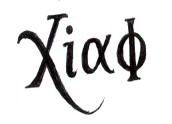Encountering America (Manila Times Walking History)
By Michael Charleston “Xiao” Chua
September 5, 2020
THE Americans seemed to have fulfilled the verbal promise they made to Emilio Aguinaldo in Hong Kong and Singapore in early 1898 to help his country gain freedom from the Spaniards. The United States was at war with Spain over the USS Maine incident. On May 1, Admiral George Dewey wiped out the Spanish armada in Cavite in what was known as the Battle of Manila Bay. But at this point, the Americans did not have ground troops. The Americans told Aguinaldo that just as they did after freeing Cuba, they would assure the independence of the Philippines. As the symbol of US Independence was the Liberty Bell, it seems they would ring the bell of freedom in the islands after being a bajo de las campanas under Spanish rule.
Aguinaldo came home as the leader of the Philippine Revolution. In many parts of the country, people were reinvigorated to continue the fight against the Spaniards and were driving the Spaniards away one town at a time. In a dramatic ceremony on June 12, Aguinaldo proclaimed Philippine Independence. He introduced our national symbols: the music of our National Anthem and the National Flag. A flag, which according to the text of the proclamation, was patterned in the colors of the flag of the United States as a sign of gratitude for the help they extended in driving away the Spaniards. We are a kind and grateful people anyway. But the point is, we won the revolution!
But the Spanish colonial government, protected by the walls of Intramuros, did not want to surrender to their colonial subjects for 333 years, so they talked to our friends, the Americans. They agreed to surrender to the Americans, in their eyes a more formidable enemy, after a fake battle which commenced on August 13, known as the Mock Battle for Manila, for honor, and honor’s sake.
Advertisement
But Intramuros was free! And the Filipino revolutionaries, with their great trust in the friendly American nation, started their march to Intramuros and to finally realizing their dream of self-governance and nationhood. But they were stopped by the Americans.
This prompted Aguinaldo to begin doubting America’s intentions. He transferred his capital to a place between two rivers — Malolos, Bulacan — where, in the nearby church of Barasoain, he convened the Congreso Filipino to create a republican constitution. At the same time, Spanish and American diplomats negotiated in Paris for the fate of Spain’s colonial holdings. The doors to the meetings were shut to Filipino representatives. By December, the two powers agreed that the Philippine islands would be handed over to the Americans. Spain would receive $20 million not as payment, but as reimbursement for the “development” they provided to the Filipinos. But the Treaty of Paris needed the US Congress’ approval.
In America, a debate was raging between the pro-imperialists and anti-imperialists. Those who were anti-imperialists, like the quintessential American writer Mark Twain, believed that America should have no business being an imperialist and should truly ring the bells of freedom by setting the Filipinos free. Pro-imperialists were sold on the idea that it was the “manifest destiny” of the white people, their “burden,” to civilize and “Christianize” (ergo Protestantism) their “Little Brown Brothers.” Since the American nation experienced being colonized by the British, they did not just want to be imperialists, they wanted to be the best imperialists. Some refer to this as “sentimental imperialism”: to be able to truly ring the bells of freedom in the islands, they must first teach these ignoramuses to ring them properly. The US Congress was divided over the matter.
The Malolos Congress finished its task and on Jan. 23, 1899, Aguinaldo inaugurated the First Constitutional Democratic Republic in Asia. But in less than two weeks, on February 4, an American serviceman shot a Filipino soldier somewhere in Sta. Mesa, Manila, which started a number of hostilities in what is now known as Metro Manila. The day after, it was a full-blown war between two republics. Fake news was spread that it was the Filipinos who started the war and the undecideds in the US Congress shifted to the pro-imperialists. The Treaty of Paris was ratified.
While the leaders of the new Philippine Republic were divided between the patriots who wanted to reject US sovereignty and the politicians who wanted to negotiate peace in exchange for “home rule,” the Filipino people gave up their lives resisting the enemy. “Benevolent assimilation” was brutal, violent, and took many lives, civilians and otherwise. When the townspeople of Balangiga, Samar successfully attacked the American detachment there, the Americans retaliated by burning their houses, crops and animals, and in the process, killing and displacing the people of the whole province. The bells of Balangiga, which signaled the Filipinos’ attack, were taken away as a war trophy by the Americans.
Although Aguinaldo was captured in 1901, the Filipinos continued resisting until 1913.
